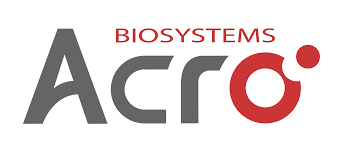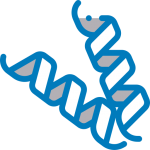
 Biotinylated Cynomolgus PD-1 / PDCD1 Protein, His,Avitag™
Biotinylated Cynomolgus PD-1 / PDCD1 Protein, His,Avitag™
PD1-C82E6
200ug
Brand
ACROBiosystems
Description
Source :
Biotinylated Cynomolgus PD-1, His,Avitag (PD1-C82E6) is expressed from human 293 cells (HEK293). It contains AA Leu 25 – Gln 167 (Accession # B0LAJ3).
Molecule : PD-1
Synonyms : PDCD1,PD1,CD279,SLEB2
Format : Powder
Category : MABSol® Biotin Labeled Proteins
Accession : NP_001271065
Storage : -20℃
Shipping condition : Powder,RT
Molecular Weight : 19.5 kDa
Characteristics :
This protein carries a polyhistidine tag at the C-terminus, followed by an Avi tag. The protein has a calculated MW of 19.5 kDa. The protein migrates as 30-45 kDa under reducing (R) condition (SDS-PAGE) due to glycosylation.
Endotoxin Level : Less than 1.0 EU per μg by the LAL method.
Buffer : PBS, pH7.4
Description :
Programmed cell death protein 1 (PD-1) is also known as CD279 and PDCD1, is a type I membrane protein and is a member of the extended CD28/CTLA-4 family of T cell regulators. PDCD1 is expressed on the surface of activated T cells, B cells, macrophages, myeloid cells and a subset of thymocytes. PD-1 has two ligands, PD-L1 and PD-L2, which are members of the B7 family. PD-L1 is expressed on almost all murine tumor cell lines, including PA1 myeloma, P815 mastocytoma, and B16 melanoma upon treatment with IFN-γ. PD-L2 expression is more restricted and is expressed mainly by DCs and a few tumor lines. PD1 inhibits the T-cell proliferation and production of related cytokines including IL-1, IL-4, IL-10 and IFN-γ by suppressing the activation and transduction of PI3K/AKT pathway. In addition, coligation of PD1 inhibits BCR-mediating signal by dephosphorylating key signal transducer. In vitro, treatment of anti-CD3 stimulated T cells with PD-L1-Ig results in reduced T cell proliferation and IFN-γ secretion. Monoclonal antibodies targeting PD-1 that boost the immune system are being developed for the treatment of cancer.
References :
(1) Ishida Y., et al., 1992, EMBO J. 11 (11): 3887–95.
(2) Blank C., et al., 2007, Cancer Immunol. Immunother. 56 (5): 739–45.
(3) Agata Y., et al., 1996, Int. Immunol. 8 (5): 765–72.
(4) Freeman GJ., et al., 2000, J. Exp. Med. 192 (7): 1027–34.
(5) Latchman Y., et al., 2001, Nat. Immunol. 2 (3): 261–8.
(6) Yamazaki T., et al., 2002, J. Immunol. 169 (10): 5538–45.
Application
Reactivity



